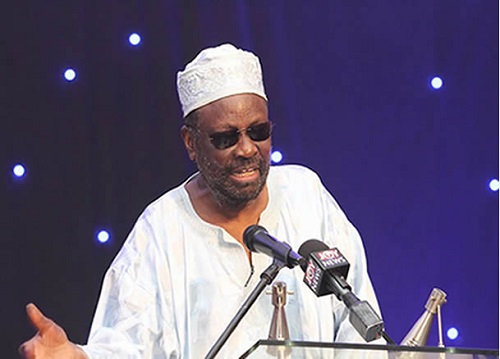I was talking to a person born and bred at Ho, in the Volta Region, about the impressions I gathered after visiting the town for the first time.
I said: “I didn’t know that Ho was such a beautiful place. The town is surrounded by wooded hills all round. And the main roads are of motorway quality.” My friend then proudly proclaimed: “Ho is the oxygen city of Ghana!”
I think he’s right! The city is very clean. And very well planned. The buildings on the hills deserve to be there. They please the eye as one follows them from hill to hill, in the course of visiting one’s chosen venues one after the other. I think the various administrations under which the city has been lucky enough to flourish, deserve the greatest credit.
You see, Ghana is now virtually under a social regime of grab and ruin. Many administrators, appointed to preserve the beauty of the past, where they serve, and to allow themselves to be inspired by past splendour to emulate their predecessors or even do better than them, do not scruple to light the fires of entropy. And once things begin to fall apart, the centre cannot hold!
Ho has been able to escape that cankerous trend. And I say Ayekoo to the men and women who have not allowed themselves to shrug their shoulders and claim that “Nothing can be done!” So much so that a private citizen, who would not know public relations hype if it was presented to him on a platter, rebrands the city, with impressive precision, as “The Oxygen city of Ghana.”
I was there to take part in a symposium organised by the Ghana Journalists Association (GJA) as part of its 75th Anniversary celebrations. I was bowled over by the idea conceived by its executive committee, not to allow Accra to monopolise the celebrations to the exclusion of the other regional capitals or centres in Ghana.
Our theme, in short, was how to build on the “excellence” of the past to safeguard the “future” of our art – or craft – of journalism.
Kumasi was the first regional capital to follow the introductory lecture in Accra. Ho was next. Wasn’t the choice eccentric? Would there even be an adequate number of journalists there to make the city a worthwhile choice of venue?
I am glad the GJA executives ignored the sceptics and took us to Ho. Apart from the surprise, we all got to find the city so pleasing to the eye; we found the human material also pretty solid. Our loquacious MC was able to locate and “recognise” about ten men and women whom he described as former journalists.
Our presentations were also excellent. Prof. Kwame Karikari, a former Director-General of the Ghana Broadcasting Corporation, gave a magnificent account of the journalistic scene in Ghana; a subject treated in a more detailed manner by another academic, Dr. Segbefia.
One meeting Dr. Segbefia, I realised how paltry news about journalists is in Ghana. I told him I had worked with his elder brother, Charles Segbefia, for three years in the newsroom of Radio Ghana. He then let me know that sadly, Charles passed about four years ago!
I often ponder that it’s dangerous, if one has lived abroad for any length of time, to ask about people in Ghana whom one had left behind. So many of them die, unnoticed, by our celebrity-crazy media.
Talking about that, it was at Ho that I learnt that two very prominent news readers at Radio Ghana, Robert Owusu and Ashie Kotey, had sadly embarked on the journey to the unknown!
Anyway, I’ve only got enough space today to convey to readers the atmosphere under which our symposium took place. I shall, God willing, do a proper report at a future date.
But before I go, I need to draw your attention to one of the latest heart-breaking stories about how galamsey is forcing our people to use dangerous, polluted water for drinking and cooking purposes.
Please Google corn dough+polluted water+galamsey.
By CAMERON DUODU


